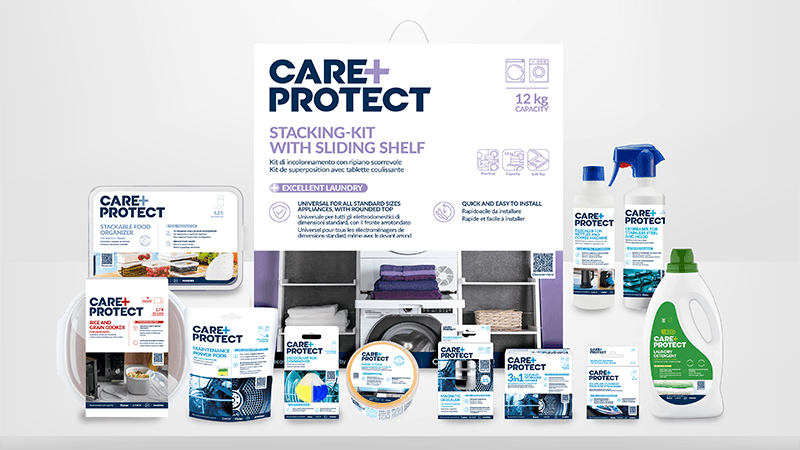
Food Processor or Blender: How to Choose the Right One
Although both food processors and blenders seem similar (they both have sharp blades that spin at the bottom of a bowl or container) they are actually quite different and excel at different tasks. If you don't have either, which one is best for you depends on what you like to cook and which kitchen tasks you prefer to do by hand.
Food processors are great for recipes that require chopping, making purees, and even doughs. They come with accessories to slice, shred and sometimes spiralise. Blenders are better for liquids, smoothies, frozen drinks and soups.
In this article we'll dive into the differences between food processors and blenders, what you can use them for and Haier's expert tips on how to choose the right one for your needs.
How food processors work
Food processors have s-shaped blades designed to chop and puree food. The blades sit in a round bowl or container, usually made from plastic or glass which is connected to a sturdy base. The base contains a powerful electric motor that makes the blades spin at different speeds. Food processors come in a variety of sizes from smaller versions like the Haier I-Master Compact Food Processor, perfect for small batches, to larger full-sized processors.
The lids of food processors usually have feed tubes or openings which allow you to add liquid to the bowl while it is running. This allows for purees, like hummus, to get thick and creamy if you add extra oil.
What works best in a food processor?
Food processors are great at chopping and dicing. Think: garlic, herbs, onions, nuts and tomatoes for salsa. The more you process the food, the finer it gets. The pulse button is a great way to control the size of what you're chopping. The stop and go motion of the pulse also helps to chop the ingredients evenly as heavier ingredients fall to the bottom when the blade stops, allowing them to get chopped.
The most common uses of a food processor are:
- Chopping & mincing -- Onions, garlic, nuts, herbs.
- Shredding & grating -- Cheese, carrots, cabbage.
- Slicing -- Cucumbers, potatoes, fruits.
- Pureeing -- Dips, baby food, hummus.
- Mixing & kneading -- Doughs and batters.
How blenders work
Blenders, like food processors, use blades to chop food, but their design differs. Blender blades are typically positioned at an upward angle and often have more prongs, creating a whirling motion inside the jug rather than lying flat like those in a food processor. The base of the blender houses the motor that powers the spinning blades. Higher wattage motors (1000W or more) are better for tougher ingredients like ice and nuts.
The lids of blenders are tight sealing and designed to be leak proof during blending. Like food processors the majority of blender lids have removable caps for adding more ingredients while blending.
What are hand blenders?
When thinking about what type of blender or food processor is best for you, another great option to consider are hand blenders. These blenders are versatile kitchen tools ideal for blending, pureeing, and mixing directly into a pot or bowl. Hand blenders are ideal for blending a hot soup without having to transfer it to a blender, for example.
Some common uses of hand blenders include:
- Blending soups and sauces
- Frothing and emulsifying sauces
- Making dips like hummus or guacamole
- Mashing potatoes or beans
- Making smoothies and shakes
Some hand blenders like the Haier I-Master Hand Blender even come with different attachments like a blender, masher, dual whisk, and glass chopping bowl, making it one of the most versatile hand blenders on the market.
What works best in a blender?
Blenders work best with liquids. Think: smoothies, frozen drinks, creamy soups, and more.
High powered blenders like the Haier I-Master Glass Jug Blender and the Haier 3-in-1 blender are great for crushing ice and making nut butters and doughs. The kneading function of the Haier 3-in-1 blender allows you to make everything from pizza dough to shortcrust pastry. Simply use the dedicated programme and the kneading blades to make preparation fast and easy. The Multi-layered blades cut through both hard and soft ingredients consistently with razor sharp blades, giving you a smooth, creamy consistency every time.
Can you use a blender and food processor interchangeably?
The short answer to this question is sometimes. Although some tasks can be done by both a blender and a food processor, for the best results and best user experience, you should use each for their designed purposes.
- Food processors and blenders both have chopping capabilities, but food processors deliver more consistent results and are gentler on delicate herbs, reducing the risk of bruising.
- Both appliances can create purees like hummus, salsa, and nut butter, but food processors do so more efficiently. They require less liquid, and their design makes it easier to scrape out every last bit.
- Food processors are not ideal for blending soups. Unlike blender jars, food processor bowls are not fully leakproof and can easily overflow.
- Crushing ice in a food processor is not recommended, as it can strain the motor and damage the blades. The base may also become unstable and move during operation.
- Unlike food processors, blenders generally cannot slice or shred.
If you are looking for an all-in-one appliance that can handle any chopping, pureeing, and mixing job, the best choice is the Haier 3-in-1 blender. It combines the functions of a food processor and blender in one allowing you to effortlessly switch between blades and tools. The 3 different jugs connect to the same powerful base, allowing you to make anything from doughs to soups to smoothies. On the go? You can even use the smoothie function and travel bottle to blend a personal smoothie right in the bottle. No need to make a mess while transferring the smoothie.
Glass vs. Plastic blender jugs
Some blenders and food processors have glass jugs and mixing bowls while others use hard, durable plastic. You might be asking yourself, which is better and why choose one or the other? Both glass and plastic have some advantages.
Glass jugs are resistant to scratches, stains and odours and are generally better for hot ingredients. Glass is also heavier than plastic, and jug capacities are usually smaller (up to 1.7 litres). High-quality plastic on the other hand like BPA-free Tritan plastic used for the Haier 3-in-1 blender jug (with a 2-litre capacity) is tough, durable and odourless. When choosing a blender or food processor jug, always be sure that the plastic is high-quality and BPA free as lower quality plastics can leach chemicals and microplastics into food.
The bottom line
Choosing between a food processor and a blender depends on your cooking needs, as each appliance excels in different tasks. For those who want the versatility of both in a single appliance, the Haier 3-in-1 blender offers the perfect solution. With interchangeable jugs and specialized functions, it seamlessly transitions between blending, chopping, and kneading, making it the ultimate all-in-one kitchen companion. Whether you're preparing a silky smoothie, a hearty dough, or a fresh salsa, this innovative appliance gives you the flexibility to create effortlessly.


